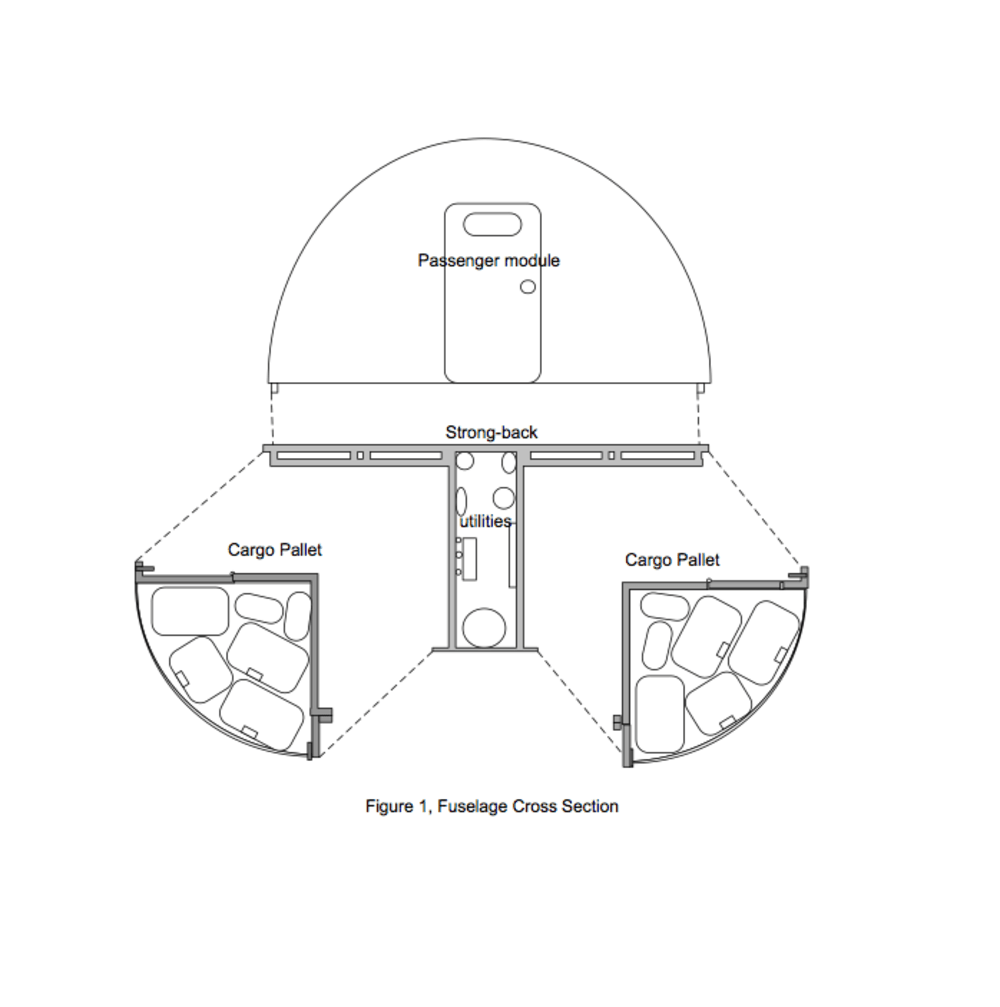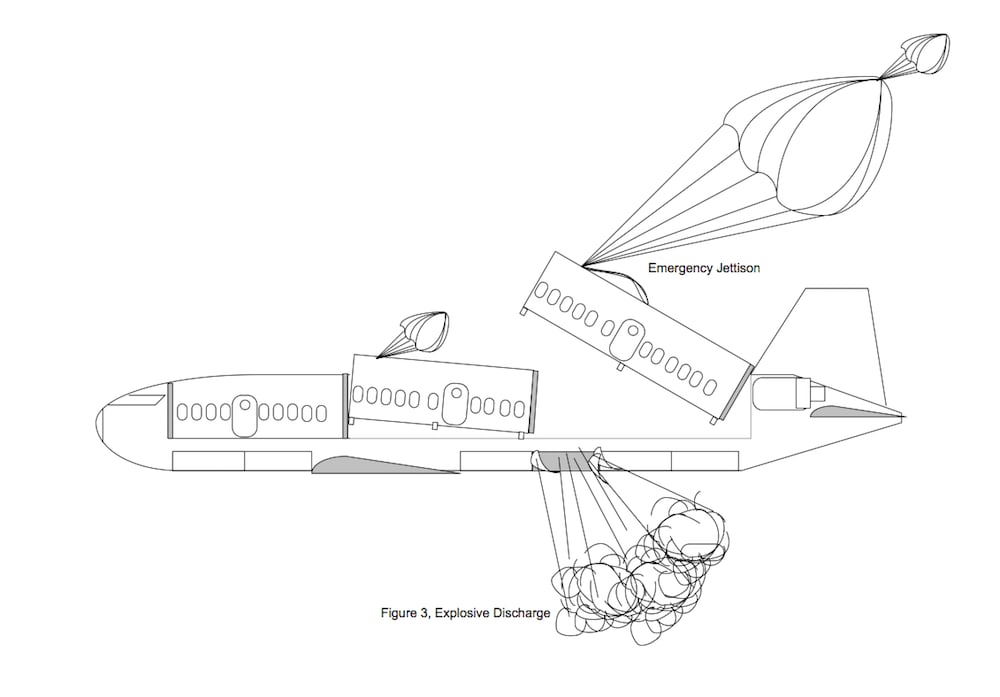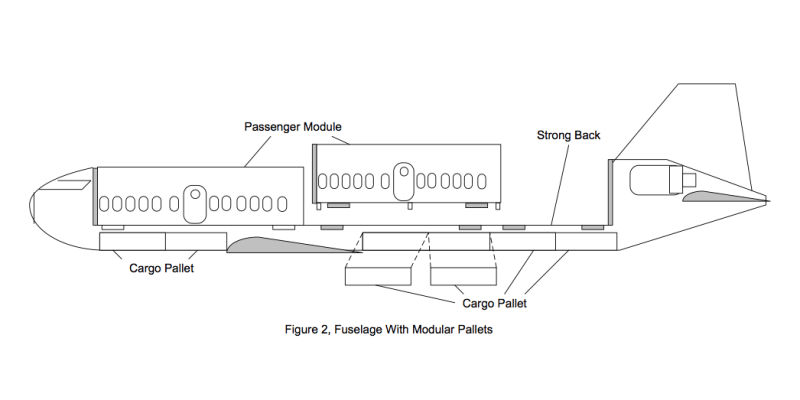The novel design of the Modular Cargo Access Pallet (MCAP) represents a complete revision of how commercial aircraft load and retain passengers and cargo. By making both the passenger and cargo compartments modular pallets, the basic ‘naked’ aircraft fuselage can be quickly fitted with custom tailored modules based on the current aircraft mission. This innovation enables a standardized aircraft fuselage to be reconfigured as a commercial air carrier, a cargo carrier, a custom boutique passenger carrier, a scientific or military platform, or an emergency response asset. This design not only provides for versatile adaptation in response to commercial pressures, but also provides for rapid deployment of tactical disaster/emergency response modules. In addition, the under-carriage (cargo pallet) modules are constructed to contain and isolate cargo in such a way that the energy of an explosive discharge in the cargo compartment is directed out and away from critical aircraft components.
Since the 1930’s the state-of-the-art for transport aircraft design has been the ‘extensible aluminum tube’ that transfers strength and rigidity through the external skin which makes the entire aircraft vulnerable to minor defects or damage to the aircraft skin. The MCAP system advances the state-of-the-art in aircraft structural design through the creation of a ‘strong-back’ fuselage made of modern composite materials. The strong-back houses mechanical, electrical, and hydraulic (utility) components shielded from mishap. The structure is envisioned as a monolithic ‘box-beam’ with a “T” shaped cross-section (Ref. Figure 1, Fuselage Cross Section). In normal operation, the ‘naked’ aircraft fuselage would be configured with both passenger and cargo modules prior to flight (Ref. Figure 2, Fuselage with Modular Pallets).
The state-of-the-art of commercial airlines allows potentially dangerous ‘carry-on’ luggage to be stowed in the passenger compartment. The MCAP system isolates cargo from the human carrier module thus eliminating the risk of chemical or biological contamination and minimizing the explosive discharge impact. In this way if an explosive device is enclosed within an individual cargo pallet, all damage would be confined to a single pallet and would be directed outward through the frangible exterior skin and away from any vital aircraft components (Ref. Figure 3, Explosive Discharge). It should be noted that the high-value (passenger) module could be jettisoned/deployed via parachute.
The MCAP design and development is well within the capabilities of large and medium sized aircraft manufacturers utilizing composite materials and computer modeling. The MCAP design eliminates the extensive use of load bearing, high tolerance, ‘skin’ fasteners that require meticulous handcrafting and inspection during the manufacturing process thus providing a cost effective alternative to the existing production process.
Practical applications of the MCAP design include commercial air carriers, military transport missions, private individual’s boutique transport, and private or government emergency response organizations.
The significant well-defined market for the MCAP system includes commercial airlines as well as military transport organizations, private individuals, and emergency response organizations. The basic ‘naked’ airframe could be owned or leased by the airline while the high-value/passenger and cargo pallet modules can be owned and maintained by diverse organizations.
Like this entry?
-
About the Entrant
- Name:James Dark
- Type of entry:individual
- Software used for this entry:MS Word, Visio
- Patent status:none








